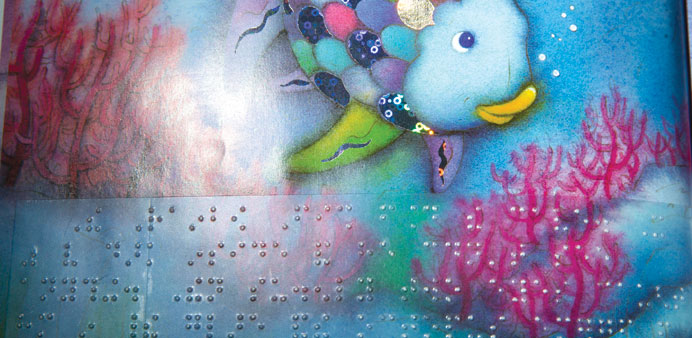By Meg Jones/TNS/Oshkosh, Wisconsin
Algebra is not the easiest subject for the average person to understand, but it’s even more difficult for a blind student.
Without seeing numbers, equations and mathematical formulas, blind students need a way to understand algebra and work through maths problems.
That’s where a group of men in prison lend a hand. In a small room at the state prison in Oshkosh, 18 inmates help blind maths students learn geometry and calculus, blind musicians memorise songs and blind travellers navigate with maps.
Earning 35 cents an hour and working seven hours a day Monday through Friday, inmates perform the painstaking work to unlock textbooks for blind and other vision-impaired students.
Dot by dot, letter by letter, number by number, John is transforming a first-year algebra textbook into Braille. “Every book you do is different. It’s a challenge. It keeps the mind sharp,” John said.
Only inmates’ first names were allowed to be used in this story.
The prison began its Braille transcription programme in 1997 at the suggestion of an inmate who had been a court reporter. Since then, 1,730 projects encompassing 10mn Braille pages have been completed, said Braille instructor Kurt Pamperin. Last year, 312 books with 750,000 pages were transcribed into Braille at the 300-bed medium security prison.
Inmates, some of whom have blind family members, apply to work as transcribers. It takes nine to 12 months to earn Literary Braille Certification through the Library of Congress. Students can earn 12 credits from Fox Valley Technical College. Forty-seven inmates have graduated from the programme, including a few who started a community-based Braille transcription service after their release.
“There’s a strong feeling of pride: I translated this book and somebody will read it,” said Clinton Bryant, education director at Oshkosh Correctional Institution. “The guys speak about it with passion.”
Most of the work is textbooks requested by schools. Among the most challenging are maths textbooks, music books and maps. A Braille translation program is used, which is generally 99% accurate, although every word must be read to check for errors. Proofreaders outside the prison suggest corrections to the inmates’ work.
Oshkosh Correctional Institution is one of 33 prisons in 26 states with Braille transcription programs. Prisons help fill a niche that computer programs can’t. Turning textbooks, maps and music into Braille requires humans and, with little profit to be made, organisations that do this work tend to be nonprofits and prisons, said Chris Danielsen, spokesman for National Federation of the Blind.
“Music, as far as I know, there aren’t that many ways to really just straight translate a musical score into Braille without a lot of human intervention,” said Danielsen, who is blind and reads Braille.
While it is becoming easier to transcribe words into Braille, fewer blind students are taught it because it’s expensive for school districts to hire Braille teachers and easier to put an iPad into a blind student’s hands.
“The argument some make is that in light of technology Braille is not needed as much,” Danielsen said. “That’s like saying because of iPads we don’t need to learn to read any more. The reality is that although you have devices that can talk, listening is not reading.”
Don, an Oshkosh inmate, is among the few Braille transcribers who handle music scores and books. On one recent day, Don was transcribing Spotlight on Music for fourth-grade students. A musician who sang in choirs, Don earned the Literary Braille Certification and continued his studies to learn music transcription, which took two years.
He has transcribed music for students at University of Wisconsin-Madison and UW-Oshkosh. One page of a full orchestral score can take Don a day or more to transcribe.
“It’s kind of neat. I can help somebody learn this music and help a blind person have this connection,” he said.

Inmates transcribed a Braille overlay on the popular children’s book The Rainbow Fish so a blind person can read along with a sighted person, at the O


